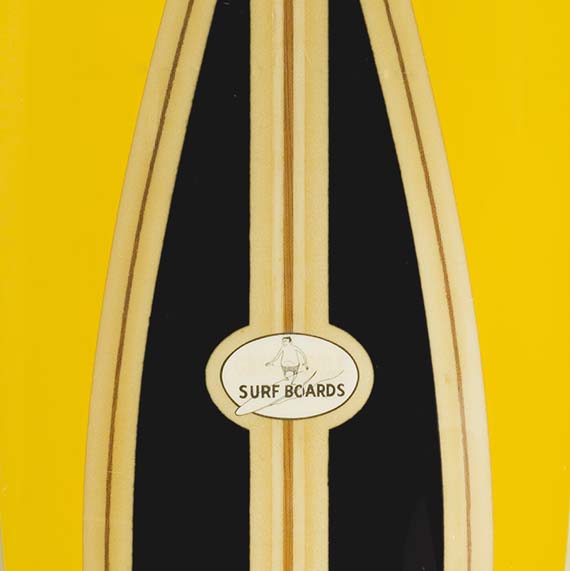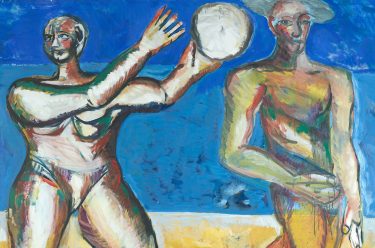
Within the culture and honour-roll of surfing, Greg Noll is one of its ‘legends’. Born in San Diego, Noll moved with his family to Manhattan Beach, California at the age of 3 years. He began to surf at around eleven, joining surf clubs and later, the Los Angeles County Lifeguards. He was introduced to surfboard shaping by another legend of the surfing world, Dale Velzy – credited with being the first commercial board shaper who opened a professional surf shop in Manhattan Beach in 1950. Noll was part of the United States Lifeguard team who competed in the 1956 Melbourne Olympic Games which had a considerable impact on the Australian surfing scene.
In 1954, Noll moved to Hawaii, finishing high school and continuing to surf. He gained notoriety in 1957 when he became one of a group of surfers who took on big waves at Waimea Bay, Hawaii. The seasonal wave breaks at Waimea can be anything between nine to fifteen metres and is still recognised as an important destination for big wave surfing. Watch the short film on this famous surf spot.
Greg Noll surfing in Waimea Bay, Hawaii 1957
The board-shaping skills that Noll learned in California evolved into his own very successful business in the 1950s at Hermosa Beach, California. He also made a series of short surf films in the late 1950s before giving up surfing in 1969 after riding what is reputed to be the largest wave ever ridden at Makaha, Hawaii. Having secured his reputation as the most fearless surfer known, he turned to commercial fishing in Alaska. With resurgence in longboards in the 1990s, he resumed board shaping and organising longboard surf events. He continues to make a limited number of boards and replicas for collectors from his home in Crescent City, California.
The surf board included in ‘California Design: Living in a Modern Way’ is representative of this great ‘classic’ era of surfing when finding and catching waves and breaks was all that mattered to a generation of young men for whom jobs, marriage and mortgages meant little by comparison. As Greg Noll has said, ‘I’m not sorry for being a fun hog for all of my life’.
The longboard was the original form for surfboards when they were first manufactured in the United States in the 1920s. They evolved from the Polynesian and Hawaiian boards made of solid wood used in the ancient practice of Hoe he’e nalu, a kind of stand-up paddle boarding. Construction materials for longboards evolved from plywood and balsawood through to fibreglass and polyurethane foam. The longboard or ‘Malibu’, typically 4 to 6 metres in length, dominated the surf scene up to the late 1960s and 1970s when short ‘performance’ boards (made famous by renowned Australian surfer, Nat Young) introduced a revolution in style and board manufacture. Vintage longboards now attract high prices on the collectors market and have assumed iconic status in the history of surf culture.
‘California Design 1930–1965: Living in a Modern Way‘ which opens at the Queensland Art Gallery (QAG) on 2 November 2013 with talks, tours, and special events will introduce Australian audiences to a broad spectrum of industrial, architectural, commercial, fashion and craft design from California. Organised by the Los Angeles County Museum of Art (LACMA) the exhibition presents over 250 objects. The publication California Design 1930-1965: Living In A Modern Way is the first comprehensive study of mid-century modern California design which offers new research and ideas about the furniture, ceramics, graphic and industrial design, architecture, metalwork, textiles and fashion produced in the Golden State.


